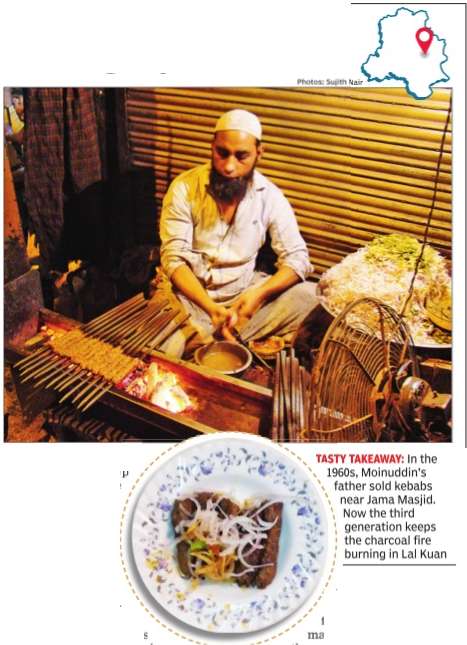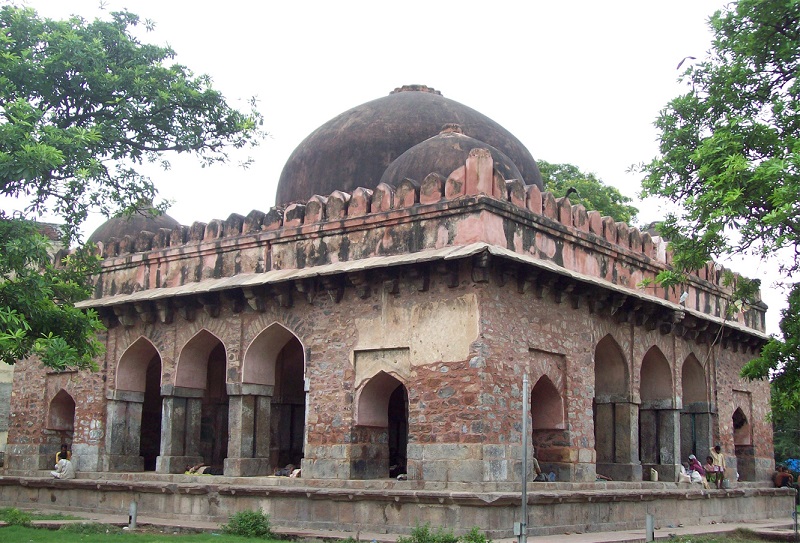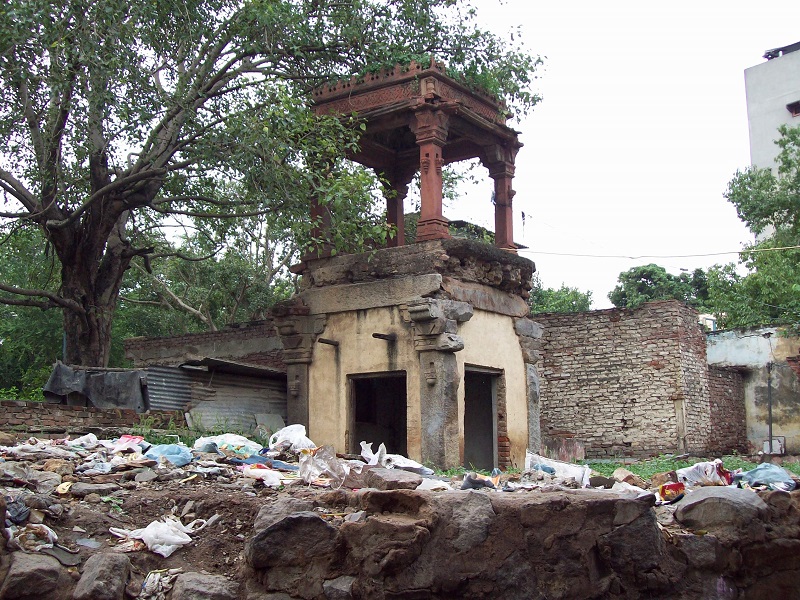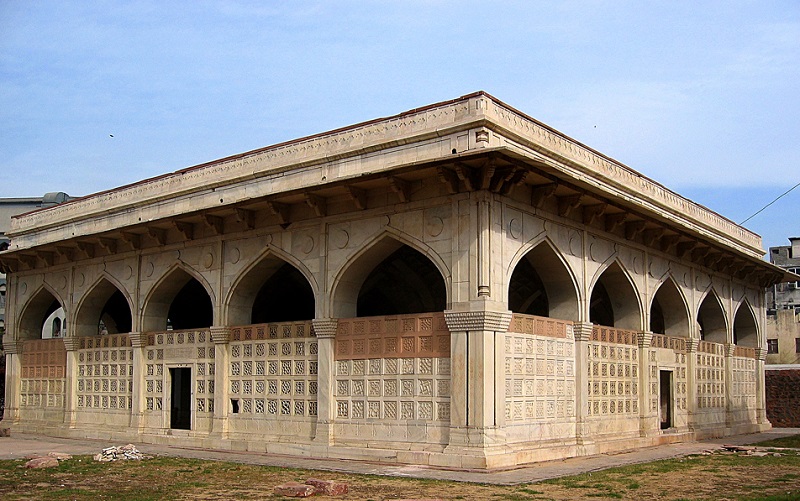Delhi: L
This is a collection of newspaper articles selected for the excellence of their content. |
Lal Kuan
Ustad Moinuddin's kebabs
The Times of India, Sep 19 2015

Sujith Nair
Old Delhi's king of kebabs For `seekhers' of skewered delights, all roads lead to Ustad Moinuddin's little shop in Lal Kuan The recipe for the best kebabs in Old Delhi is no secret. Ustad Moinuddin's shop in Lal Kuan is a must-stop for kebab lovers and its 62-yearold owner shares his recipe and technique with anyone who asks for it -but to replicate the mojo, one needs a large heart! As dusk sets in, sparks fly from burning charcoal, which turns minced meat wrapped around skewers into delicious seekh buff kebabs, and a crowd builds up close to the action. All of this happens on the single step that leads up to a shuttered meat shop in Qasimjan Gali, opposite Hamdard Dawakhana. The Chawri Bazaar Metro Station is a fiveminute walk from here.
Residents holding casseroles join others who wait patiently for their takeaway while some enjoy it sitting in the adjoining shop, Sangam Kebab Corner, which Moinuddin bought in 2004.The shop serves kebab for Rs 10 a piece, along with pudina chutney, onions and a dash of lemon.
It all began in the mid '60s, when Moinuddin moved to Delhi from Meerut to assist his father, who sold kebabs in t Jama Masjid's Chittli Kabar -for 10 paise a piece! By 1970, Moinuddin had gone solo and started selling kebabs in Kasabpura in Sadar Bazaar. In the early '80s, he moved to Lal Kuan.
A few years later, a portion of Moinuddin's index and middle fingers on the right hand had to be amputated following an accident while mincing meat in a machine. But that didn't deter him from weaving his magic around the skewer. There are quite a few buff tikka sellers near by, but Moinuddin's shop draws most of the evening crowd. As to what makes his kebabs such a crowdpuller, he simply says he has no greed, and that God has given him enough in life.
Despite ill-health, he keeps a hawk's eye on preparations at his home in Seelampur. He inspects the meat -around 45kg -that comes from a local butcher by noon.A small portion is kept aside for his second son, who sells kebabs in Seelampur.
Spices are sourced from Khari Baoli and asala prepared at a mill there. The rest of the prepara tion -mincing of meat with masala, onion and salt -happens at home.
Lal Mahal
The 13th-century Lal Mahal (Red/ Ruby Palace) in the Nizamuddin area, is one of the oldest Islamic palaces of India, is located in the ‘prohibited zone’ of four centrally protected monuments— Nizamuddin Baoli, Barakhamba, Chausath Khamba and Mirza Ghalib’s tomb. It is not an ASI-protected site. In 2013 construction activities took place around it.


